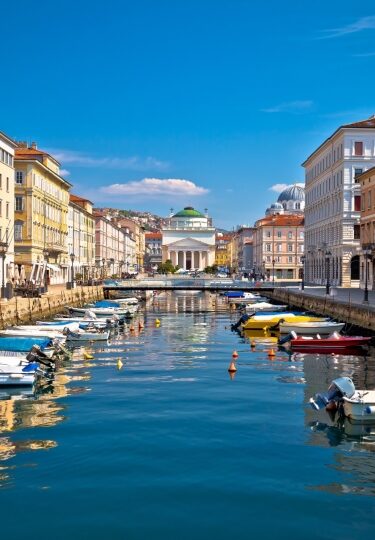Trieste, Italy, once the mighty Austro-Hungarian Empire’s main commercial port, is a coastal municipality where you can still witness the many cultural influences—Germanic, Slavic, and of course Italian—that helped forge the city as it is today.
Located in Italy’s northeast, Trieste, the capital of the Friuli Venezia Giulia autonomous region, pushes up against the Slovenian coastline to the east and sits next to the Adriatic Sea. And given the proximity of Austria to the north, you can easily understand why Trieste has long been a crossroads of different civilizations.
Eminently walkable, Trieste is a must if spending time in this part of Europe; it’s a place where you will be able to discover an exceptionally diverse side of Italy, and see how history has shaped the distinctive character of this vibrant border town over the centuries.
Why Visit Trieste, Italy

Piazza dell ‘Unità d’Italia
Trieste, Italy, while off the beaten track for some, is worth a visit due to its Mitteleuropean atmosphere (Mitteleuropa is a term for “Middle Europe”). While it’s an Italian city, it has a characteristically central European feel about it.
Outstanding seafood and fish, a deep love of coffee, plus Europe’s largest sea-facing square, Piazza Unità d’Italia make Trieste a unique destination.
And don’t forget the city’s cool cafés, like Antico Caffè San Marco, where literary giants like the Italian poet Umberto Saba and Ireland’s James Joyce used to hang out.
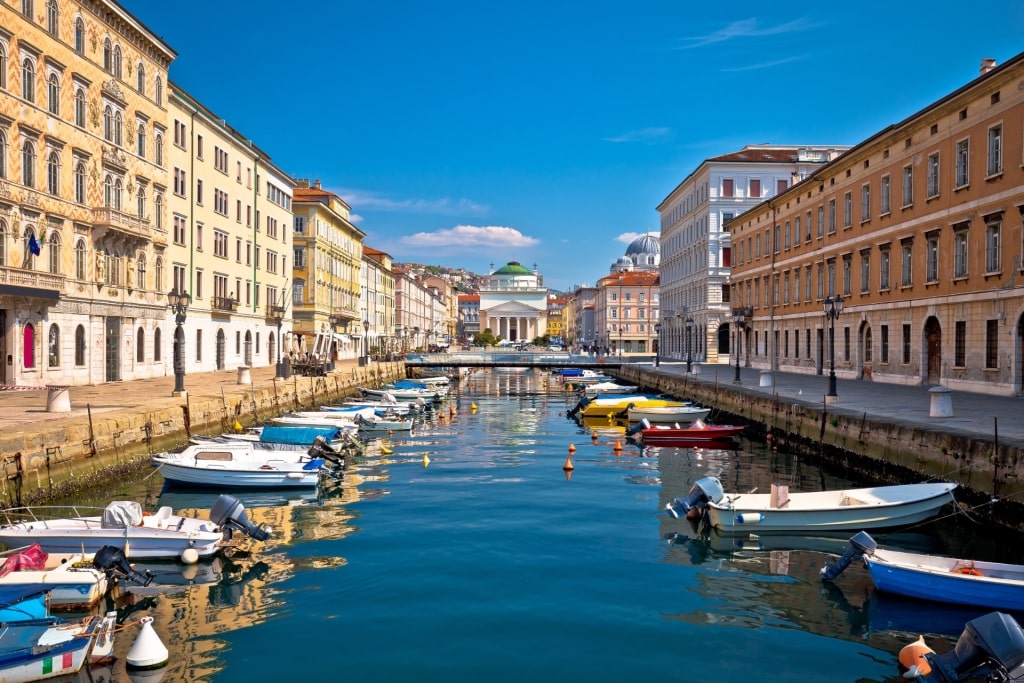
Canal Grande
You’ll also find echoes of the Habsburg Empire’s glory days throughout the city, typified by the stylish buildings along the Grand Canal in the Borgo Teresiano quarter, named for Empress Maria Theresa, daughter of the Holy Roman Emperor, Charles VI.
Trieste’s monuments and grand edifices will constantly remind you that yes, you may be in Italy, but there’s a lot more to uncover under the surface.
History & Culture
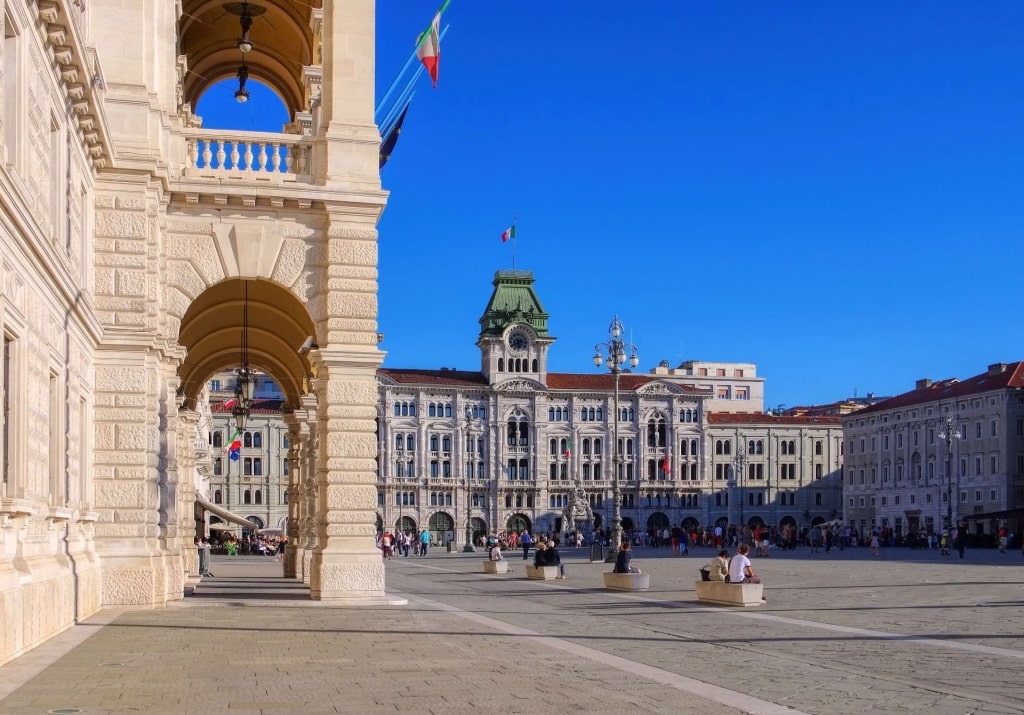
Piazza Grande
Trieste has seen centuries of prosperous trade, war and conflict, and periods of decline, along with golden ages when the port was booming. As early as 177 BC, Trieste fell under the influence of the Roman Republic, and later on, was granted colony status by Julius Caesar.
After the fall of Rome, Trieste in the late eighth century, came under Charlemagne and Frankish rule, and was governed by the count-bishop. From the 13th century on, Trieste’s maritime trade prowess was challenged by the Republic of Venice, with Venice declaring war and occupying the city several times over the 13th and 14th centuries.
Trieste then petitioned the Duke of Austria, Leopold III von Habsburg, to join his realms. The city voluntarily submitted to the Duke’s rule in 1382. As the centuries passed, this heterogeneous Mediterranean enclave became a vital seaport for the Austro-Hungarian Empire.
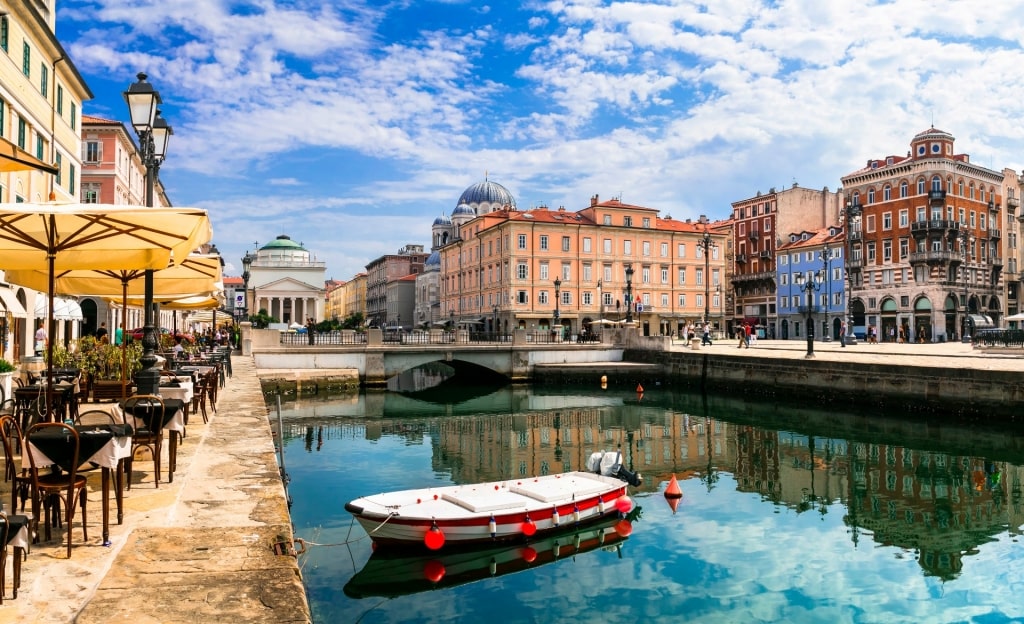
Canal Grande
In the early 1700s, Emperor Charles VI established Trieste as a free port, exempt from taxes. Mercantile business and trade flourished—with several brief hiccups due to French occupations during the Napoleonic Wars.
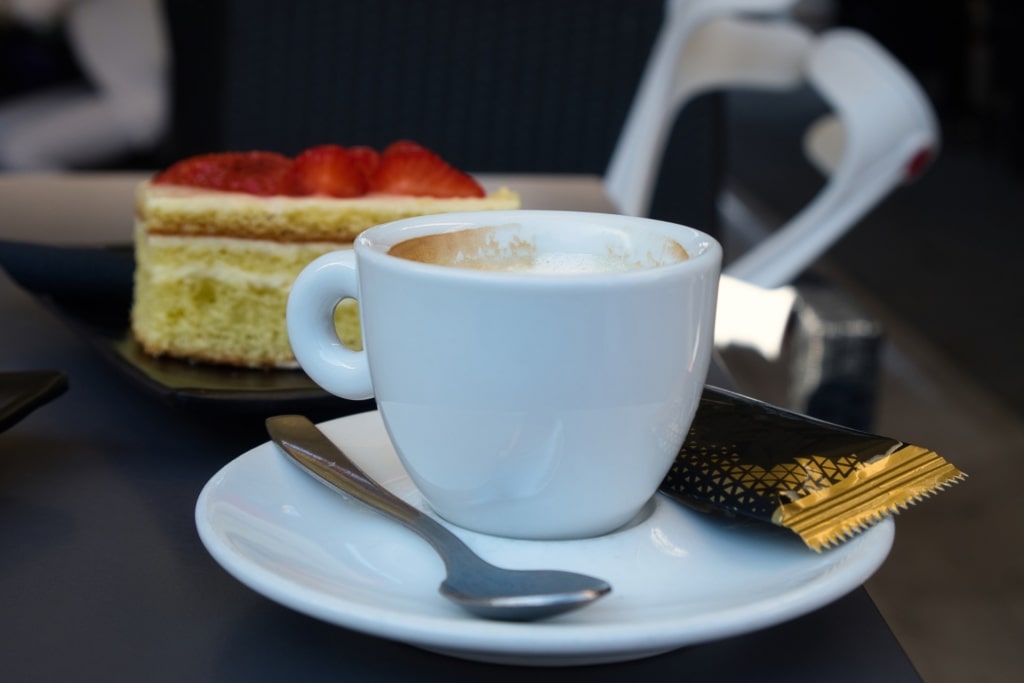
Coffee
Ottoman Empire coffee beans poured into the free port, fueling the city’s love affair with coffee, along with coffee house culture in Vienna and other parts of the empire.
The creation of a deeper port in the Imperial Free City of Trieste only added to its geo-economic importance. The city was made the capital of the Austrian Littoral regions, or Küstenland, and became an important shipbuilding hub.
Italy annexed Trieste after WWI, as a reward, in essence, for siding with the Allied Powers. During the Second World War, Mussolini’s fascists ruled the city, although German Nazis took over for long stretches, establishing a concentration camp for Jews and other ethnic groups.
After WWII, Trieste became an independent territory for a spell, before joining the Italian Republic in 1954. Today, Trieste is a sophisticated, multiethnic city, where Italian, Triestine (a Venetian dialect), German, and Slovene are spoken by different segments of the population.
Tips for Visiting Trieste, Italy
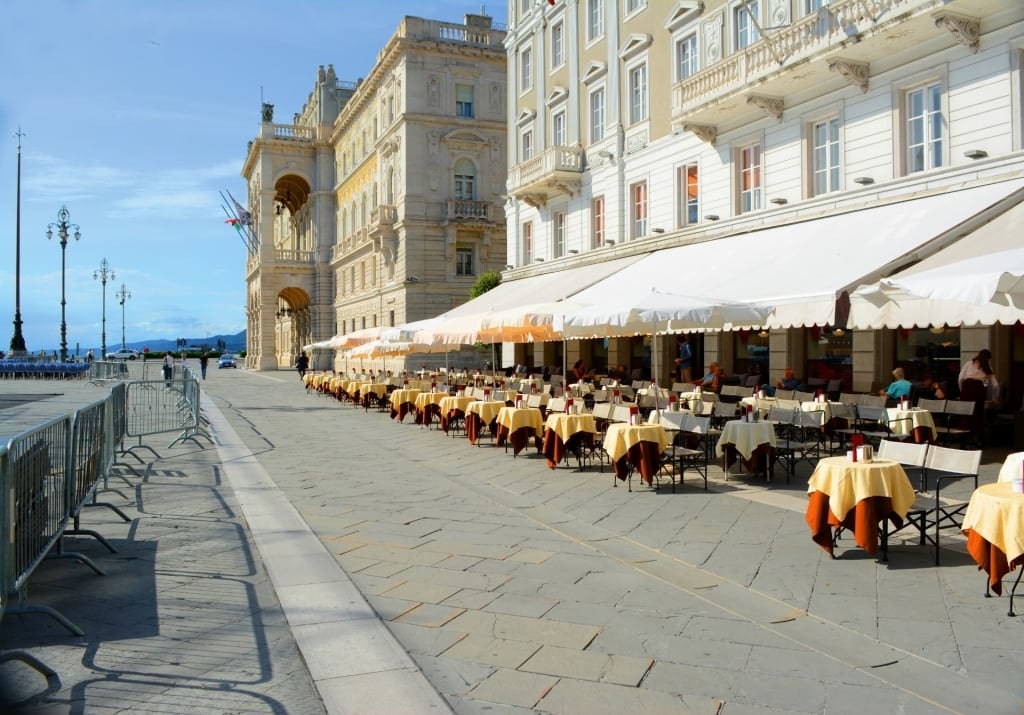
Trieste
Trieste packs a lot into a fairly small city center. It’s easy to walk from destination to destination, enjoy the city’s famed coffee at a leisurely pace, or stop for a fish lunch in between visiting historical sites. Note that many restaurants are closed on Sundays and Mondays if that’s when you happen to arrive.
If you speak some Italian, give it a try; but realize that the local dialect is quite a departure from standard Italian. Don’t be disappointed if you don’t understand much; locals will appreciate the effort either way.
Also, watch out for the city’s notorious “Bora” northeasterly katabatic winds, coming in from the Slovenian Karst and dumping into the Gulf of Trieste. While these winds can be fun to experience on occasion, they can knock you off your feet, and fling projectiles like chairs and plates through the air.
Wildlife & Nature
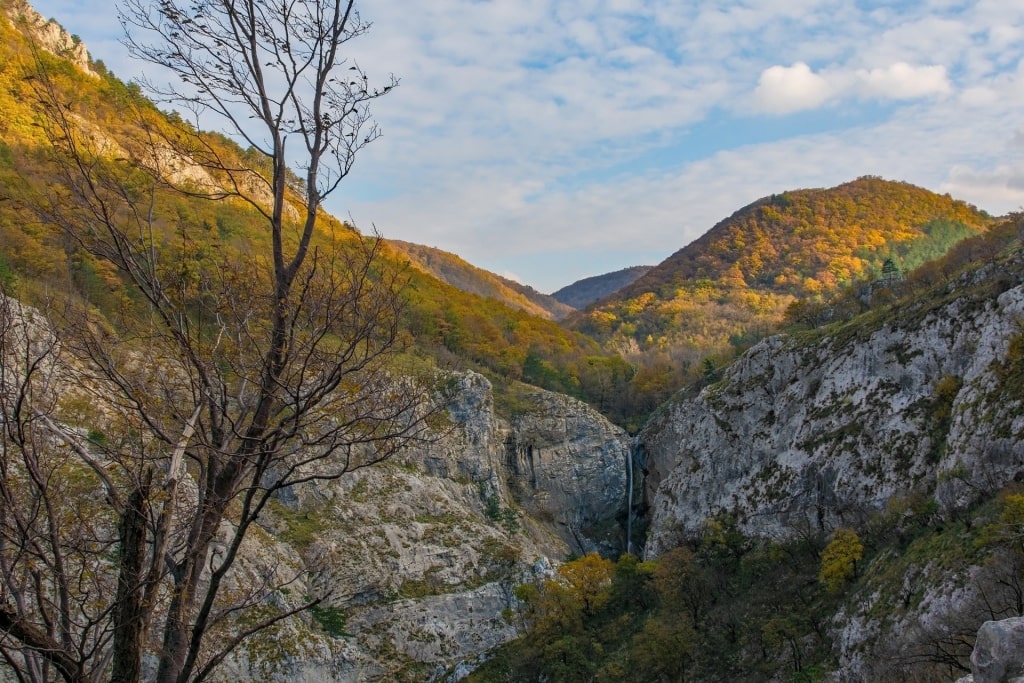
Val Rosandra Nature Reserve
Trieste, fronting the Adriatic, is situated in a fairly diverse geological region. The Dinaric Alps, starting around Trieste and stretching toward Albania, provide verdant topography nearby for you to explore.
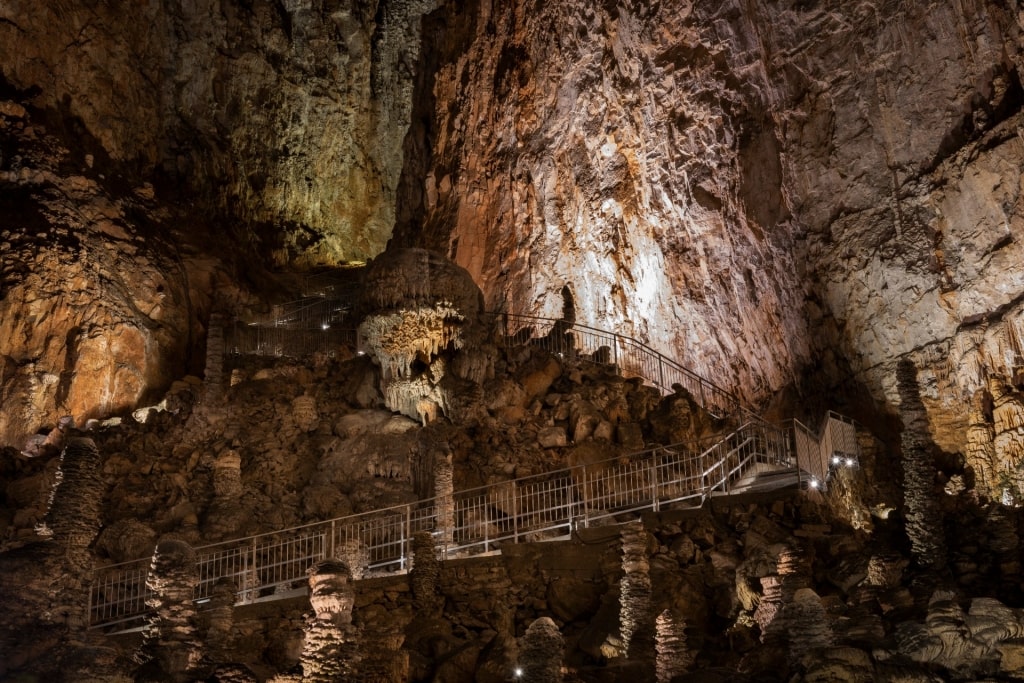
Grotta Gigante
The Val Rosandra Nature Reserve, close to the city, is rich with limestone cliffs, karst caves, pebbly streams, green hills, and walking paths. And speaking of caves, you’d be remiss if you didn’t visit the Grotta Gigante. This impressive cavern, on Italy’s side of the Trieste karst, is a massive single cave, millions of years old.
When it comes to fauna, you may be able to spot bottlenose dolphins in the Gulf of Trieste, or creatures like hooded crows, the blue-throated keeled lizard, the common magpie, reddish western roe deer, black-headed gulls, and the Eurasian red squirrel.

Green rose chafer beetle
The nine-spotted moth, green rose chafer beetle, chimney bellflower, the European smoketree shrub, Cantabrican morning glory, and many other flowers, plants, and insect species are also on the viewing menu as you move about the region.
Things to Do & Attractions in Trieste, Italy
Visit Piazza dell ‘Unità d’Italia

Piazza dell ‘Unità d’Italia
Piazza Unità d’Italia, the city’s main square, is closed in by regal-looking Hapsburg-era edifices all around—with the notable exception of the northwest side, which opens out onto the Adriatic.

Piazza dell ‘Unità d’Italia
The square and its buildings were given a revitalizing facelift at the beginning of this century. Some of the main attractions here include Trieste’s Town Hall, the Viennese-designed Palazzo del Governo, and the Fontana dei Quattro Continenti, or Four Continents Fountain.
If you fancy a classic Trieste coffee experience, swing by the square’s Caffè degli Specchi, where you can soak in the piazza’s maritime vibe, just like the writer James Joyce did back in the day.
Read: How To Order Coffee in Italy
Enjoy the Views from the Vittoria Lighthouse
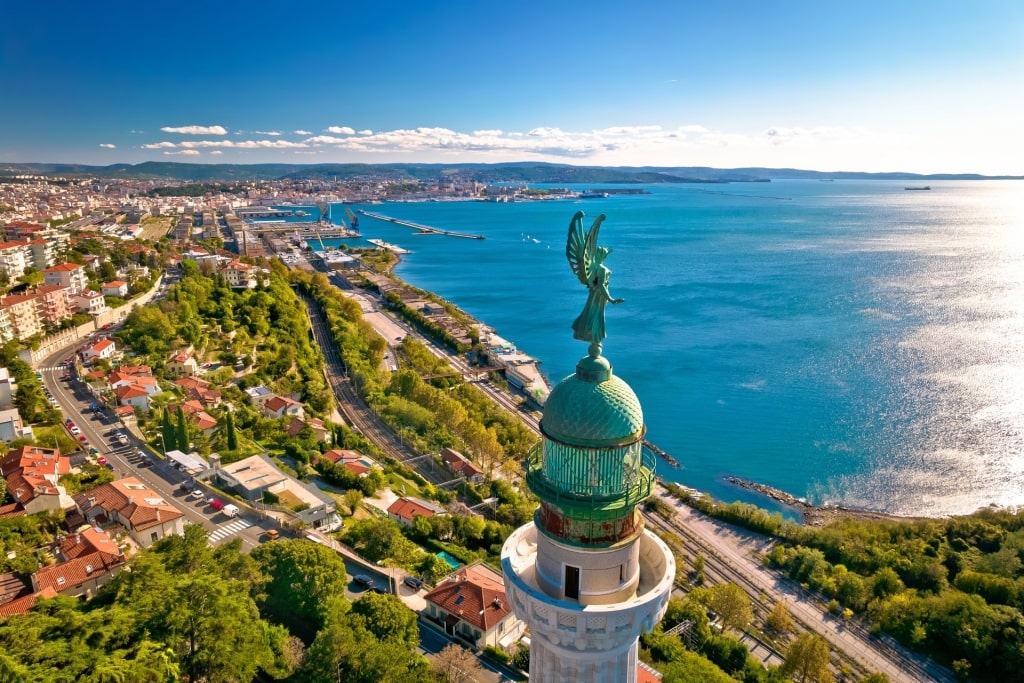
Vittoria Lighthouse
One of the best things to do in Trieste is to visit the Vittoria Lighthouse, or Faro della Vittoria. Located toward the northern edges of the city, the lighthouse is an iconic viewpoint. Sweeping panoramas from the base of the 220-foot-high lighthouse are breathtaking to behold, extending across the city and the Gulf of Trieste.
The stone-sided lighthouse, with a Winged Victory copper statue perched on top, was designed by Giovanni Mayer and assembled between 1923 to 1927. Today, it’s operated by the Italian Navy.
Stroll Along Trieste’s Waterfront, Canal Grande, and Old Quarter
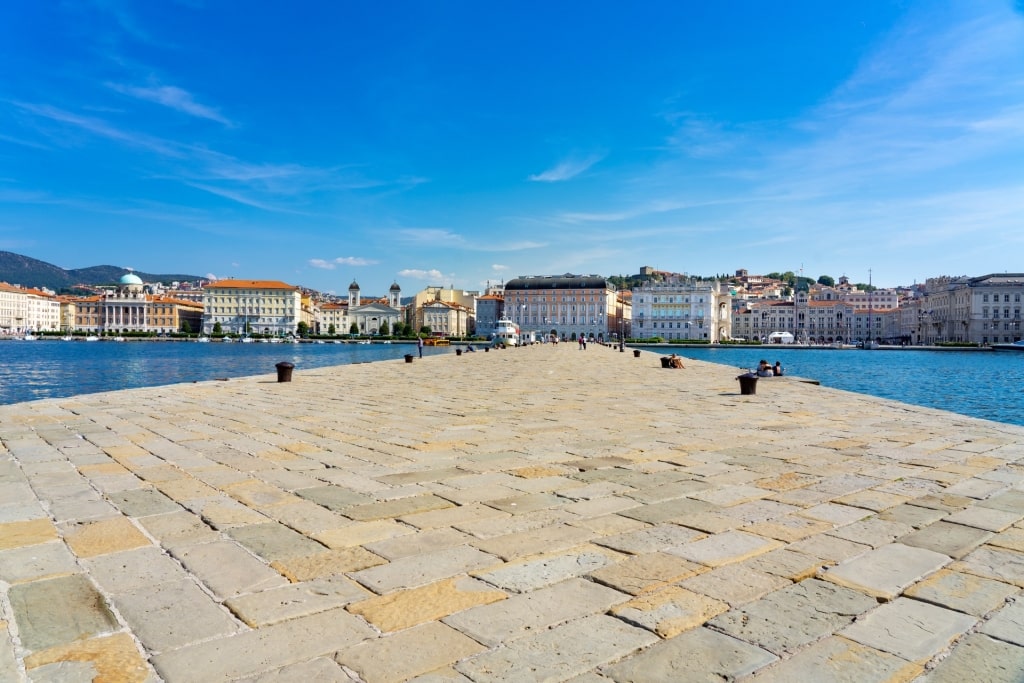
Molo Audace
Trieste is well-suited for long, unhurried strolls. Three outstanding walking areas are the waterfront, Canal Grande, and Città Vecchia, or old town.
The “rive” waterfront is a wonderful zone to immerse yourself in Trieste’s nautical ambiance. A ramble here will take you past Piazza Unità d’Italia and the long Molo Audace stone pier (named for the first Italian Navy vessel to visit the port).
You’ll also pass Teatro Lirico Giuseppe Verdi, with a handsome exterior that resembles Milan’s La Scala Opera, and the Canal Grande di Trieste. The big yachts berthed in the marina might catch your eye too.
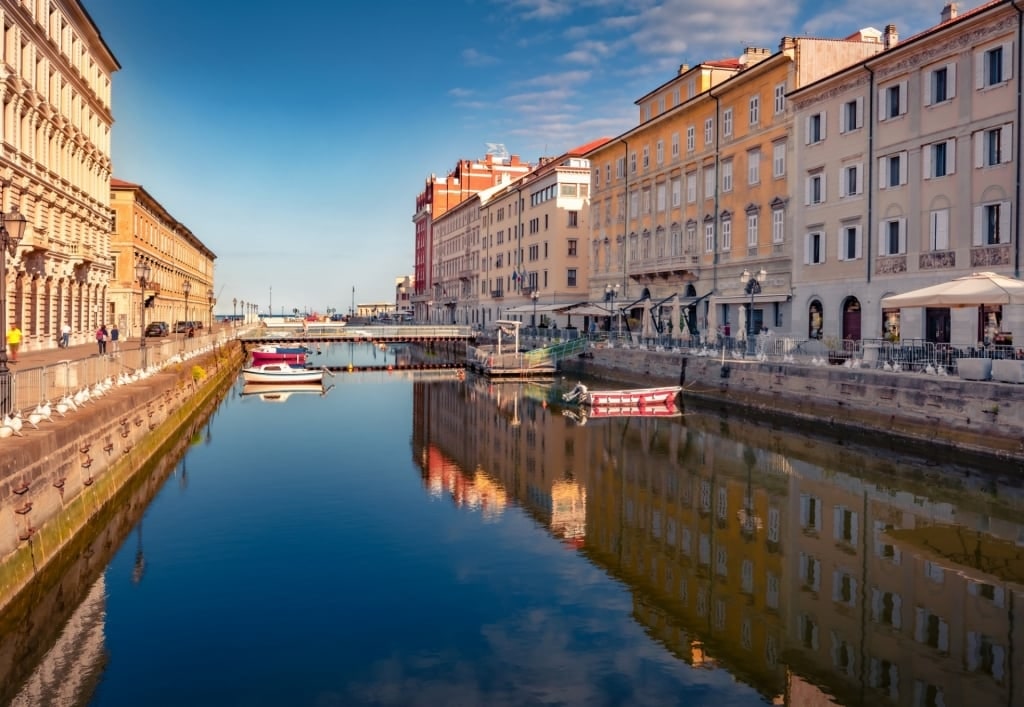
Canal Grande
The elegant Borgo Teresiano district’s main feature is the Canal Grande. Located slightly north of Piazza Unità d’Italia, the canal, which came into its own during and after the rule of Empress Maria Theresa, is full of striking buildings lining the waterway.
Two notable structures here include the Church of Sant’Antonio Taumaturgo, Trieste’s largest Catholic church, and the multi-domed white stone Serbian Chiesa di Santo Spiridione church.
The old city, or Città Vecchia, boasts plenty of small, cobblestone pedestrian-only streets, ideal for ambling about. You can window shop here, take in the medieval architecture, and stop for a coffee or pastry before heading toward other nearby destinations, like San Giusto Hill.
Call Upon Trieste’s Cattedrale di San Giusto Martire
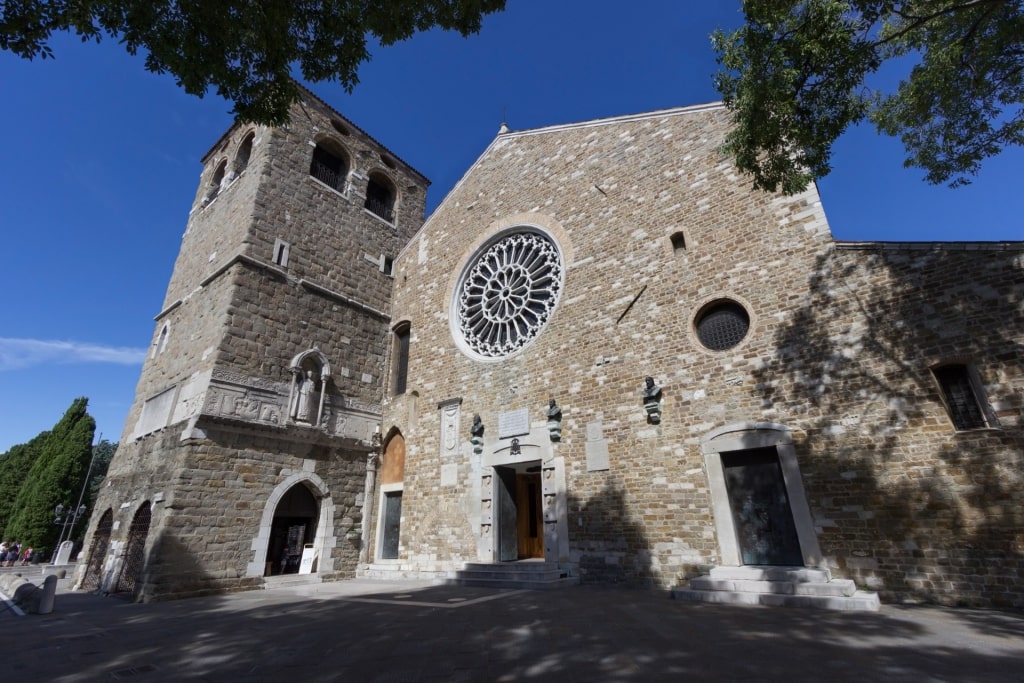
Cattedrale di San Giusto Martire
If you don’t mind a hill hike, head up to Trieste’s Roman Catholic cathedral, the Cattedrale di San Giusto Martire.
While different religious buildings have stood here since Roman times, the current cathedral came into being during the 14th century, merging various structures to create a sturdy edifice dedicated to Saint Justus.
The Romanesque and Gothic cathedral is relatively simple in design, with a large Gothic rose window standing out as its most prominent feature. San Giusto Hill will also offer you superb views over this underrated European city.
Explore San Giusto and Miramare Castles
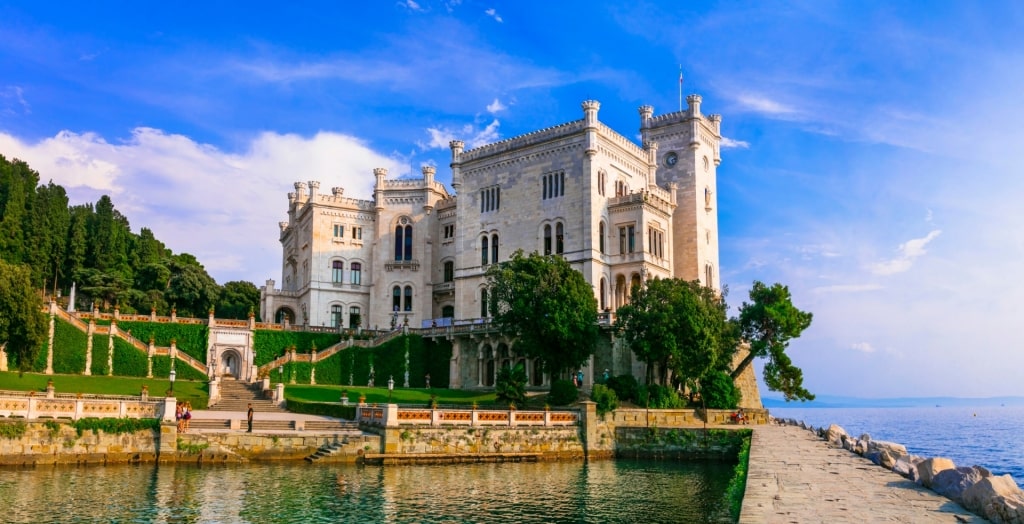
Miramare Castle
Two main castles of note in Trieste are Miramare and San Giusto. Miramare, just outside the city, is an elegant white seaside manor with a large park and Italian garden. The region’s most visited castle combines Gothic and Renaissance design, along with other architectural movements.
Archduke Ferdinand Maximilian—younger brother of Emperor Franz Joseph—and Maximilian’s wife, Charlotte of Belgium, built the imposing residence in the mid-1800s. The couple only lived here for a few years before moving to Mexico, where Maximilian was eventually executed.
This awe-inspiring locale, built on a stony chuck of land jutting out into the Adriatic, is sure to captivate your attention. The estate’s large park, with its many exotic plant species, is enchanting as well.
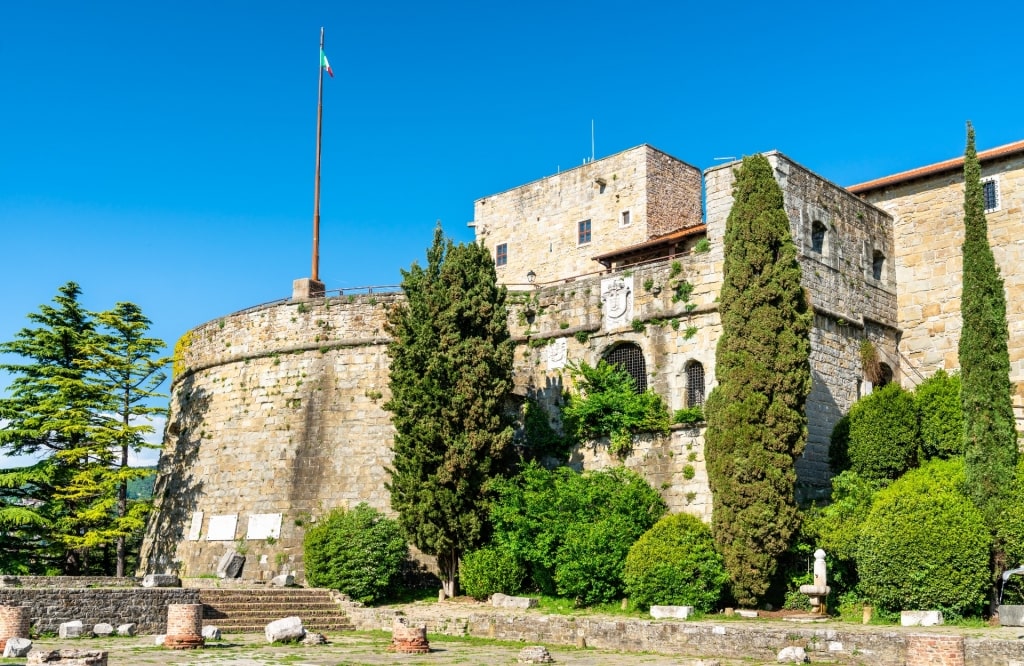
San Giusto Castle
San Giusto, on the other hand, is a rugged Italian castle constructed to defend the city. Located on San Giusto Hill, in the center, the castle, erected by the Austrian Empire in the late 14th century is a popular destination.
The tough-looking, triangular-shaped San Giusto fortress walls will offer you brilliant vistas across Trieste. You can also drop by the castle’s armory museum to see how wars were fought in the past.
Discover a Dark Chapter at Risiera di San Sabba
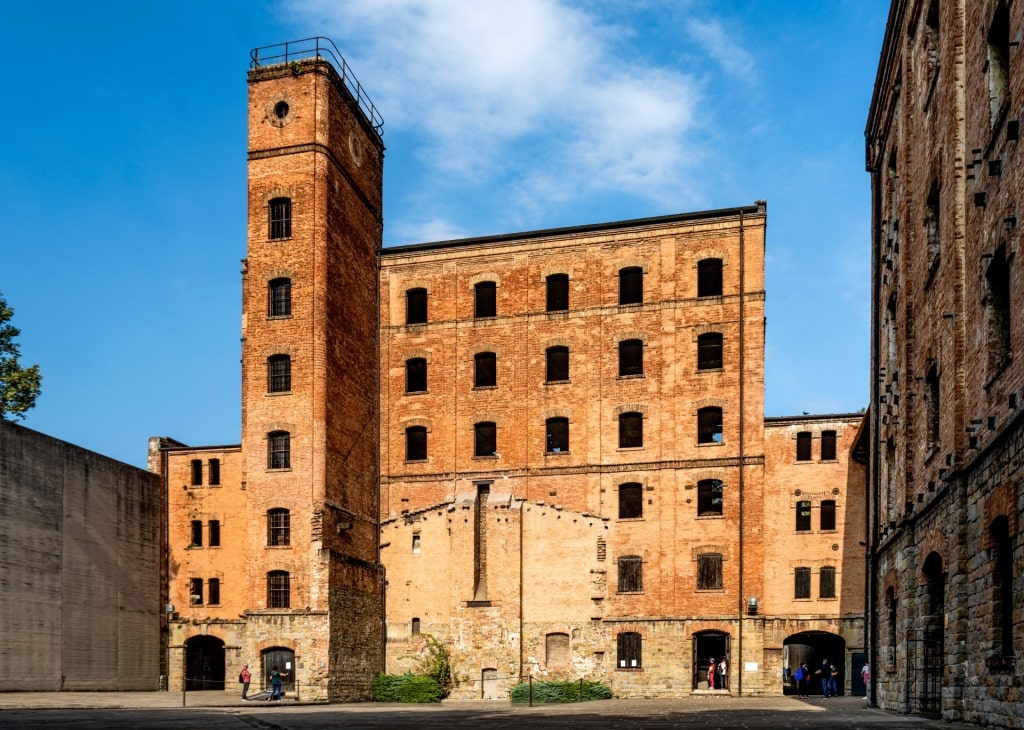
Risiera di San Sabba
Risiera di San Sabba, once a rice-husking factory, is now a sobering museum dedicated to the memory of the Nazis’ time in Trieste. They used this five-story brick building as a concentration camp for political partisans, resistance fighters, and Jews.
Several thousand people were murdered at the camp, which had its own crematorium; more than 20,000 souls were imprisoned here.
The concentration camp also served as a transit site for prisoners before they were deported to other camps. Risiera di San Sabba is located in the southern part of the city and serves as a stark reminder of the region’s brutal wartime past.
Stop by Trieste’s Roman Theatre
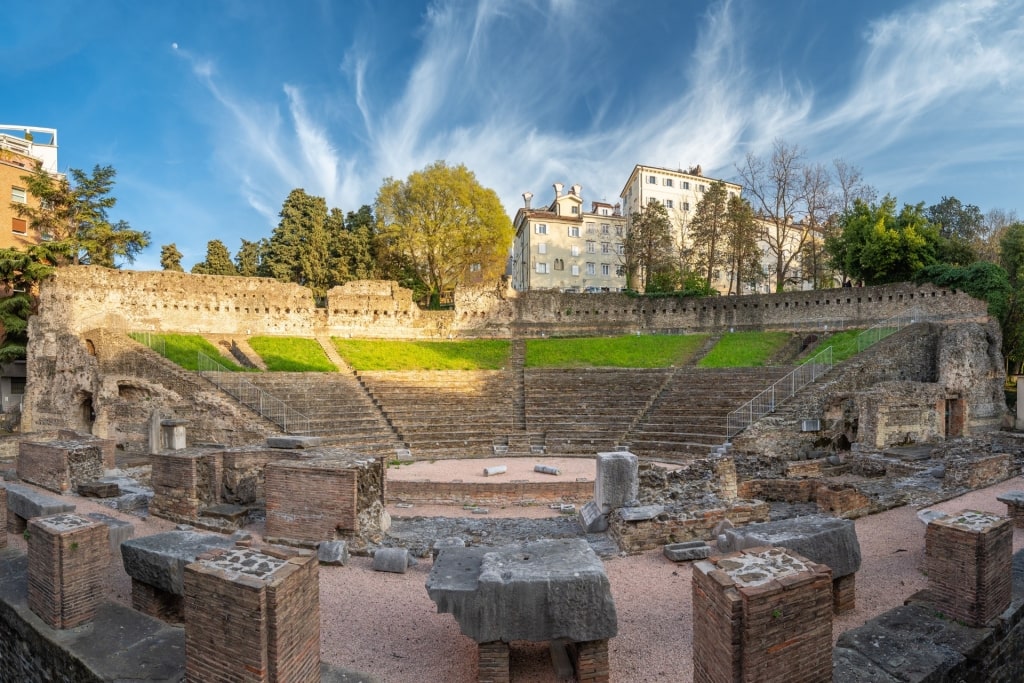
Roman Theatre
Trieste’s Roman Theater, once able to hold 3,500 spectators or more, was lost to time. Situated in the old town near Piazza Unità d’Italia, the theater, built during the first and second centuries AD, had been covered up by homes and other structures for centuries.
In 1814, the theater was relocated by the architect Pietro Nobile but wasn’t uncovered until 1938. Today, these ruins stand as a testament to Rome’s influence over Trieste, millennia past.
Food & Drink
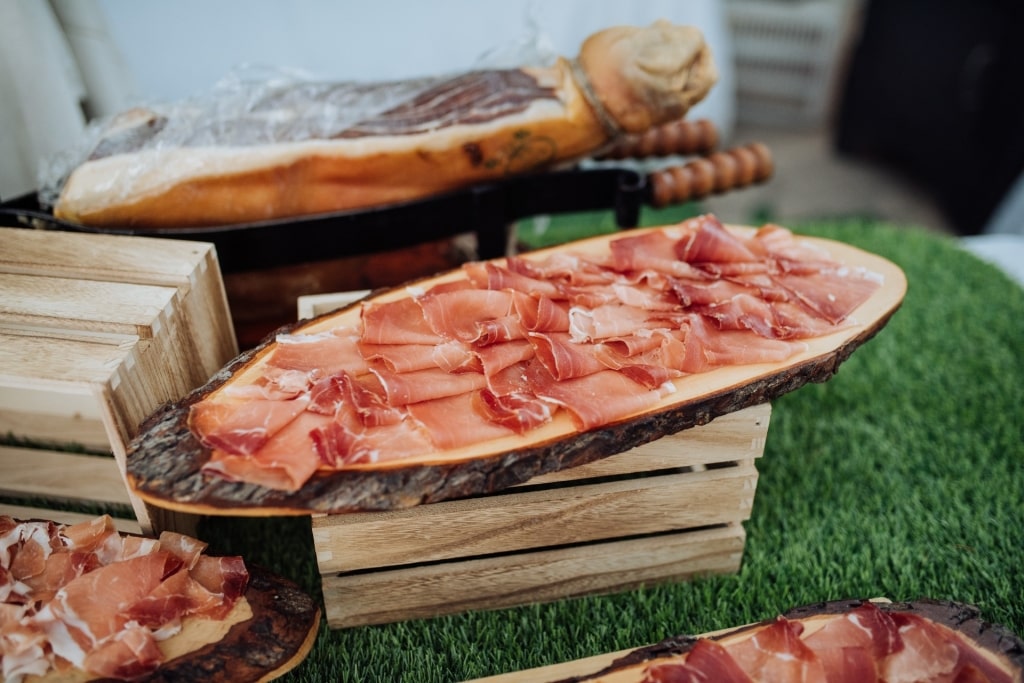
Prosciutto di San Daniele
A melding of Germanic, Slavic, and Italian culinary traditions is a given in Trieste. While starters, along with first and second courses, follow the Italian norm, the sustenance you’ll be dining on often tends to vary from the rest of the country.
For example, Ljubljanska, a popular dish named after the Slovenian capital, is a hearty stuffed breaded pork cutlet enjoyed by many in Trieste.
The salted Prosciutto di San Daniele, the supple, smoked Prosciutto di Sauris cured ham, and the semi-hard cured Montasio cheese are popular starters and snacks you may want to sample as well.
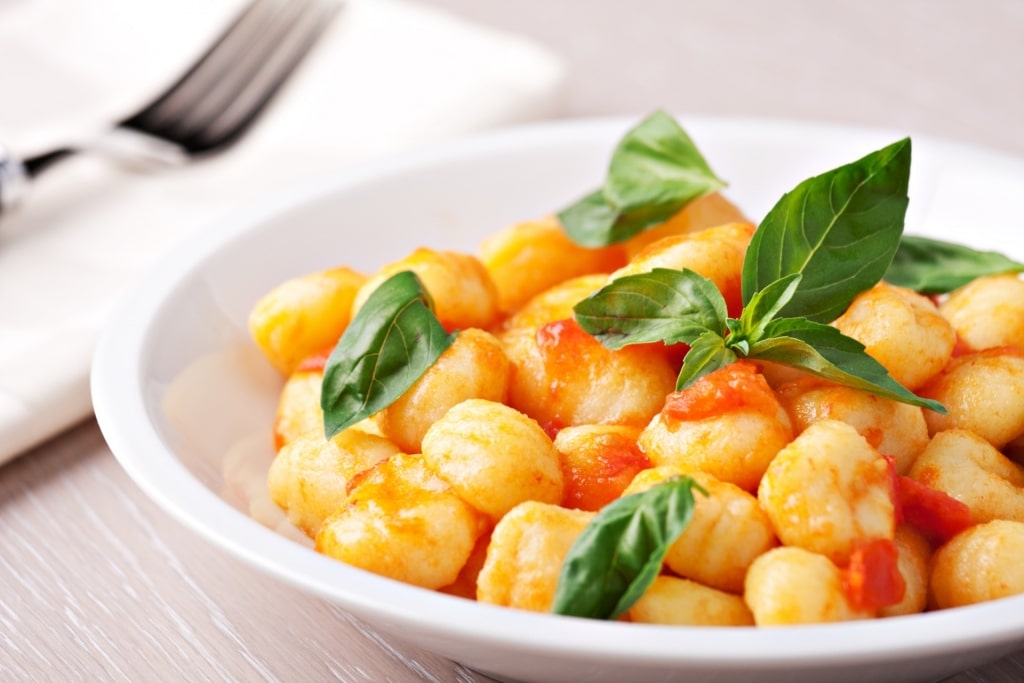
Gnocchi pasta
First courses (primo) often consist of soup or a gnocchi pasta, such as the satiating Joto bean and sauerkraut soup. Second courses, as Trieste is an Italian port city, often include baked or grilled fish or seafood, fried sardoni impanati (similar to anchovies but bigger), pork and beef, or meat-based stews.
Apple strudel, crostolo fritters, and almond biscuits are a few of the desserts and sweets you may encounter.
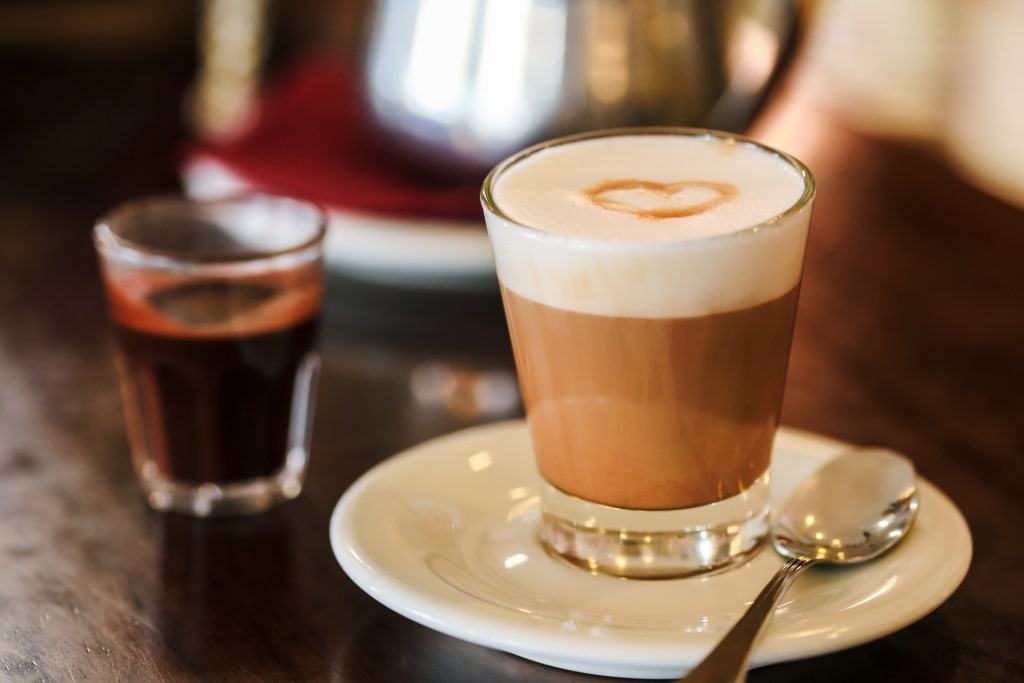
Coffee
Trieste, home to the famous coffee brand Illy, is celebrated for its coffee bean expertise. Coffee culture reigns supreme here, as evidenced by the much-celebrated coffeehouse Caffè degli Specchi, plus many other delightful coffee spots across the city.
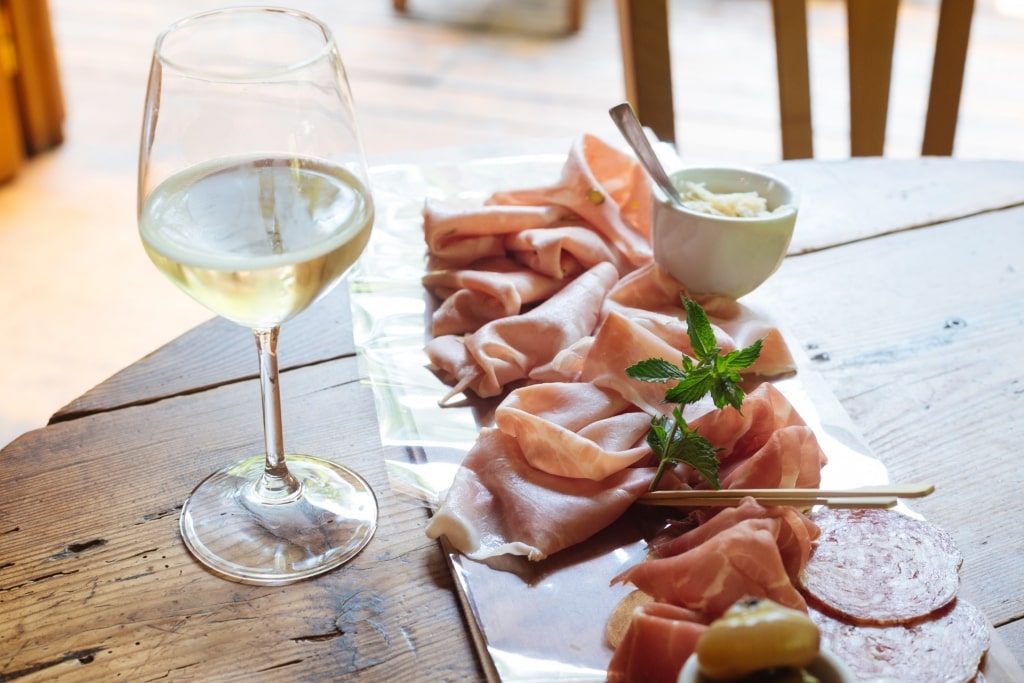
White wine
White wine is favored among the city’s inhabitants. Italy is known for its wine, and many of the wines you’ll taste come from the nearby Carso, or Kras, wine region. The fruity, yet dry friulano, or sauvignonasse white wines are favored by local connoisseurs.
For a real treat, try the ancient, somewhat rare, lightly floral-flavored Ribolla Gialla white, not readily available anywhere else. The spritz bianco aperitivo, with white wine, ice, a lemon or orange slice, and sparkling water, also makes for a refreshing Italian summertime treat.
Best Time to Visit Trieste, Italy
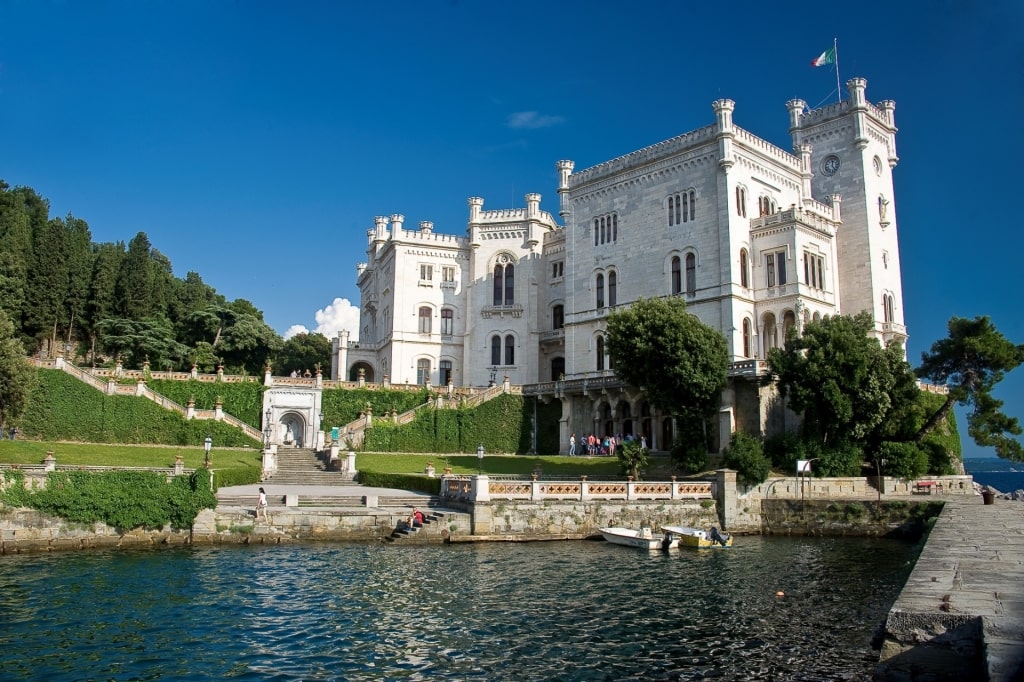
Miramare Castle
While Trieste’s legendary winds and coastal setting mean the weather and temperatures can change rather quickly, the best time to visit is mid-spring through mid-autumn. July and August are typically the hottest months; July, for example, experiences average highs of around 82°F (28°C).
November and December tend to see a fair bit of rain, as does late spring, from May heading into June. But besides the strong winds, it’s unlikely you’ll suffer extreme weather events during your stay, as the weather in Trieste is usually relatively mild.
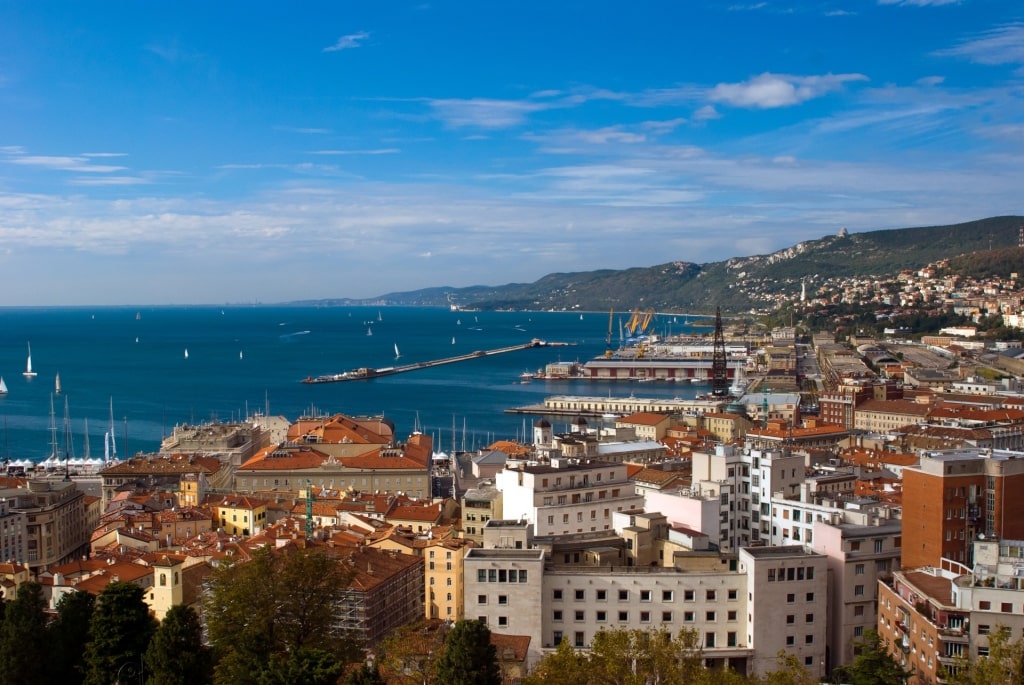
Trieste
If you’d like to explore all that this corner of Italy has to offer, browse Celebrity’s cruises to Trieste and book your next amazing European vacation.
